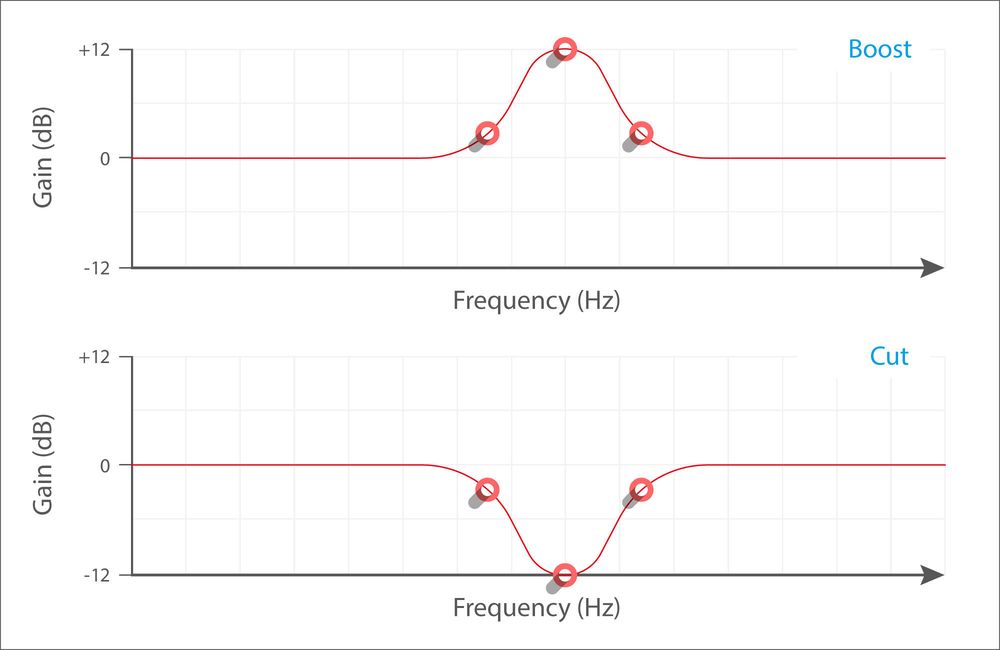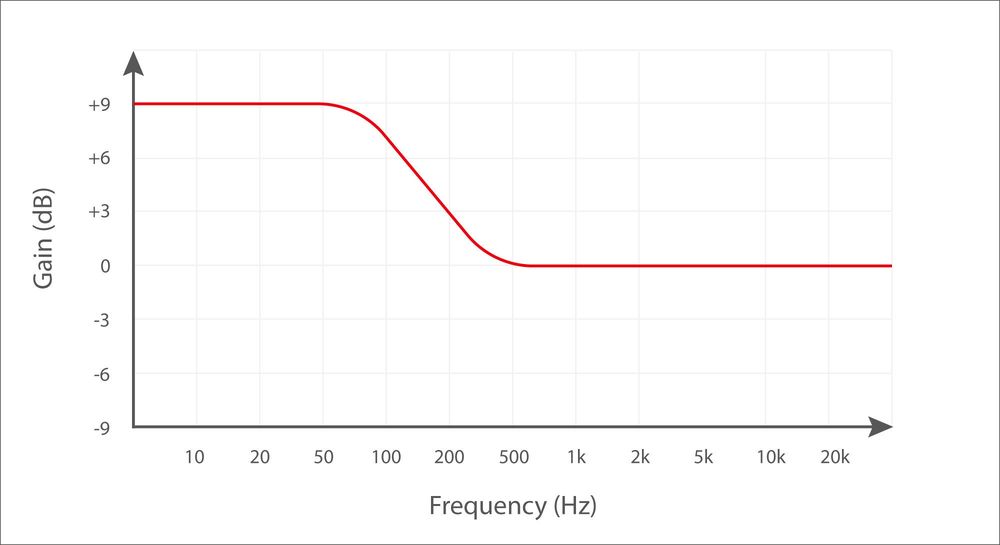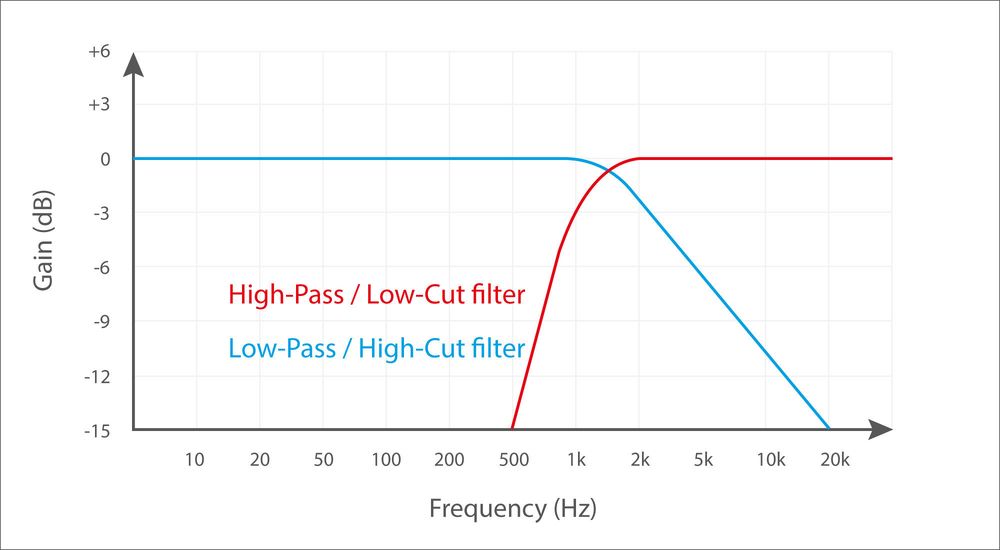3. Equalizers
One of the most fundamental and crucial types of effects in multi-effects units is filters (commonly known as equalizers or EQ). If you're not well-versed in audio filters, it's worth taking a brief dive into equalizers at this point. This way, you can assess what filter types you might need and ensure they are covered by the multi-effects unit of your choice.

Bell curve filters allow you to precisely boost and cut specific frequencies.
The classic equalizer filter type is the bell filter, often referred to as a bell curve filter. It allows you to boost or cut the audio signal at a particular operating frequency. Some bell filters have fixed frequencies, while others allow you to select the frequency within a certain range. If you were to graphically represent the boosting or cutting effect of this filter type, you'd see that its name perfectly describes the shape of its frequency manipulation. The width of the bell curve, which corresponds to the extent of its processing range, is known as "Q" and is expressed as a Q value. Large Q values indicate a high quality factor (Q), implying that a relatively narrow range of frequencies is processed by the filter. So, if you're searching for a multi-effects unit with finely adjustable equalizer bands, make sure that both the frequencies and the boosting/cutting levels, as well as the Q values of the filters, are adjustable.

Shelf filters, also known as "shelving filters," work on both the low and high ends of the frequency spectrum, allowing you to boost or cut the bass and treble frequencies.
Shelf filters, often called shelving filters, work on both the low and high ends of the frequency spectrum. They allow you to boost or cut bass and treble frequencies. This filter type is especially versatile when you can adjust not only the extent of boosting or cutting but also the corner frequency. Shelf filters are useful wherever you need substantial corrections in bass or treble.

Cut/pass filters trim the frequencies of a signal at the upper and/or lower ends of the frequency spectrum.
Cut/pass filters also operate at the low and high ends of the frequency spectrum. Low-cut filters (sometimes abbreviated as "LoCut") do precisely what their name implies - they remove the low frequencies from an audio signal. Since as a result, only the higher frequency components above the corner frequency remain, it's also commonly referred to as a "high-pass filter." High-cut or low-pass filters, on the other hand, remove the high frequencies of a signal. Accordingly, only the frequencies below the selected corner frequency are retained for this filter type. If you're on the hunt for high-quality cut/pass filters with more adjustment options, make sure that the filter slope or steepness is adjustable. The slope is typically expressed in dB and indicates the level at which the filter curve drops per octave. For instance, 6dB/Oct suggests a relatively gentle slope, while 48dB/Oct indicates a more "surgical" cutoff.




